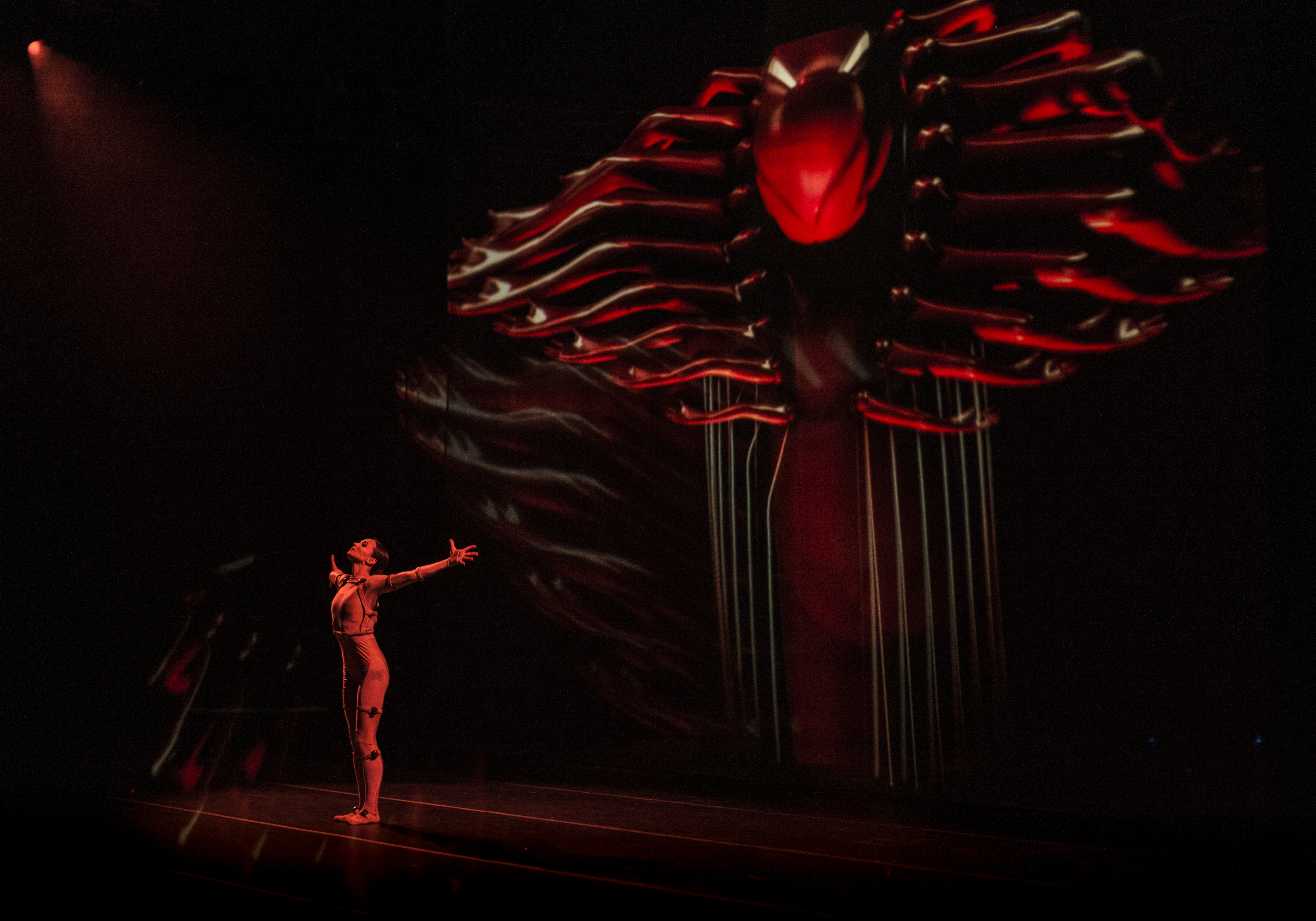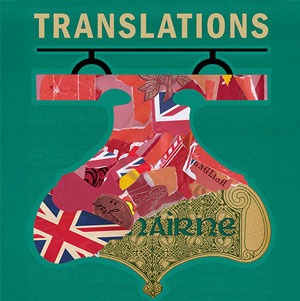
 [rating=3]The Auditorium Theatre in downtown Chicago was abuzz last evening as patrons filed in to witness “Sleeping Beauty Dreams,” a revolutionary and ground-breaking new art form that marries dance and technology in a stunning spectacle of light, sound and movement. Billed as a contemporary dance and art experience, “Sleeping Beauty Dreams” is a unique take on an age-old fairy tale that explores the dreams and terrors experienced by Princess Aurora during her 100-year slumber. This production was conceived and brought to the stage by director Rem Hass, in collaboration with an army of artists and technological wizards, all at the top of their respective fields, and features world-renown ballet stars Diana Vishneva, as Princess Aurora, and Marijn Rademaker, as Prince Charming.
[rating=3]The Auditorium Theatre in downtown Chicago was abuzz last evening as patrons filed in to witness “Sleeping Beauty Dreams,” a revolutionary and ground-breaking new art form that marries dance and technology in a stunning spectacle of light, sound and movement. Billed as a contemporary dance and art experience, “Sleeping Beauty Dreams” is a unique take on an age-old fairy tale that explores the dreams and terrors experienced by Princess Aurora during her 100-year slumber. This production was conceived and brought to the stage by director Rem Hass, in collaboration with an army of artists and technological wizards, all at the top of their respective fields, and features world-renown ballet stars Diana Vishneva, as Princess Aurora, and Marijn Rademaker, as Prince Charming.
Anyone hoping to see a re-imagined version of Tchaikovsky’s time-honored ballet will be disappointed as there is very little, if any, classical dance on display in this performance. However, if beauty is in the eye of the beholder and dreams can be interpreted in many different ways and mean many different things, the same can be said of art, and that is certainly true of last evening’s performance.
If what you went looking for was a modernistic art experiment that merges contemporary dance, visual arts, lighting, and electronic dance music with virtual CGI technology, then this performance was hugely successful. There can be little doubt that the actual star of “Sleeping Beauty Dreams” is the real-time, digital, avatar technology, that, almost swallows the space in its sensory-thrilling enormity. Vaguely humanoid images swirl, ripple, atomize and refract in kaleidoscopic explosions of light, color and motion as the technology-fueled amplifications of the movements performed by Vishneva, live on stage.
Thanks to the 14 motion sensors worn by Vishneva throughout the performance, famed digital artist, Tobias Gremmler brings to life an other-worldly troupe of demons and angels who’s menacing mimicry haunt and torment our heroine across her dreams. Described in act 1 as “Demons” and in act 2 as “Temptations,” Gremmler’s avatars hypnotically mirror Vishneva as she dances her battle for freedom from these phantasms in a dazzling visual experience.
But as a work of dance and theater that unites and optimizes the use of technology within the artform, Sleeping Beauty Dreams comes across as an initial experiment into the possibilities of such collaborations and not as a fully formed piece of theater. Anyone looking for the artistic magic of dance, a coherent narrative, or an emotional connection to the piece or the performers, will have a hard time finding that here, as all has been sacrificed to the technological Gods.
Vishneva’s dancing while technically precise and perfect was completely devoid of emotion and looked almost robotic and automated. Since such un-hurried, mechanical, and disciplined movements are necessary for the technology to succeed, it makes sense that the emotion, intensity, power, and passion we have come to expect from more traditional dance performances is lacking. Even in their Pax de Deux, Vishneva and Rademaker, two awesomely talented dancers in their own right, felt limp, disconnected and devoid of chemistry. The best dance of the evening came when the performers were freed from their technological chains and could just move, as was the case when Vishneva is accompanied on stage by a chorus of eight, androgynous male dancers who are, at once, her captors, their role on stage, and her liberators, in allowing her, for moments, to dance technology free.
The musical accompaniment, by Thijs de Vlieger, member of the progressive EDM drum and bass trio Noisia, is more like a sci-fi movie soundtrack than an actual musical score. At once jarring and unsettling, the dystopian, futuristic, post-industrial sounds are the perfect counterpoint to the theatrical alchemy occurring on stage. The same too can be said of the costumes, designed by Jorge Muskus, whose luxe, futuristic textiles and bold Avant guard designs added to the phantasmagoric extravaganza. Most noticeable were the white mesh skirts and metallic red tops that adorned Aurora’s captors as they menacingly encircled her on stage, as well as an ethereal, feathery wrap Aurora wears in the second act that make her appear like phoenix rising from the ashes.
All is not lost here. There were times when the technology and artists worked in harmony to support the dance, in a way that drew the eye from the supernatural imagery floating above us, to flesh-and-blood dancer on stage, and back again in an inspiration of the heart and mind. “Sleeping Beauty Dreams” presents us with new horizons and possibilities for the future of dance theater, and challenges audiences to re-imagine the way in which they experience dance, specifically, and art, in general.
Yet, on the whole, the performance needs refinement. A narrative to propel the story and interconnect, what, currently feel like a series of disjointed impressions, would be a good place to start. Likewise, as a multi-disciplinary project, more  consideration has to be given to the ways in which individual elements come together so that, instead of competing with each other, they unify to support the whole. Most importantly, however, is that Sleeping Beauty Dreams, and the art form it is trying to define, needs to find its soul and its humanity, fundamentally at the heart of all great dance and theater.
consideration has to be given to the ways in which individual elements come together so that, instead of competing with each other, they unify to support the whole. Most importantly, however, is that Sleeping Beauty Dreams, and the art form it is trying to define, needs to find its soul and its humanity, fundamentally at the heart of all great dance and theater.
I am confident that given the talent that was so evidently on display this evening, it’s only a matter of time before performances like this are part of our artistic lexicon. All that’s needed is a little more clarity, a little more depth and a little more heart and humanity to make “Sleeping Beauty Dreams” a fairy-tale for our time.
For more information about the performance, Magic Reality Group, tour dates and to purchase tickets, visit www.sbdart.com. Follow Sleeping Beauty Dreams on Facebook, YouTube, and Instagram.






More Stories
“Translations”
“The Firebugs” reviewed by Julia W. Rath
“The Book of Grace” Al Bresloff with another from Paul LIsnek